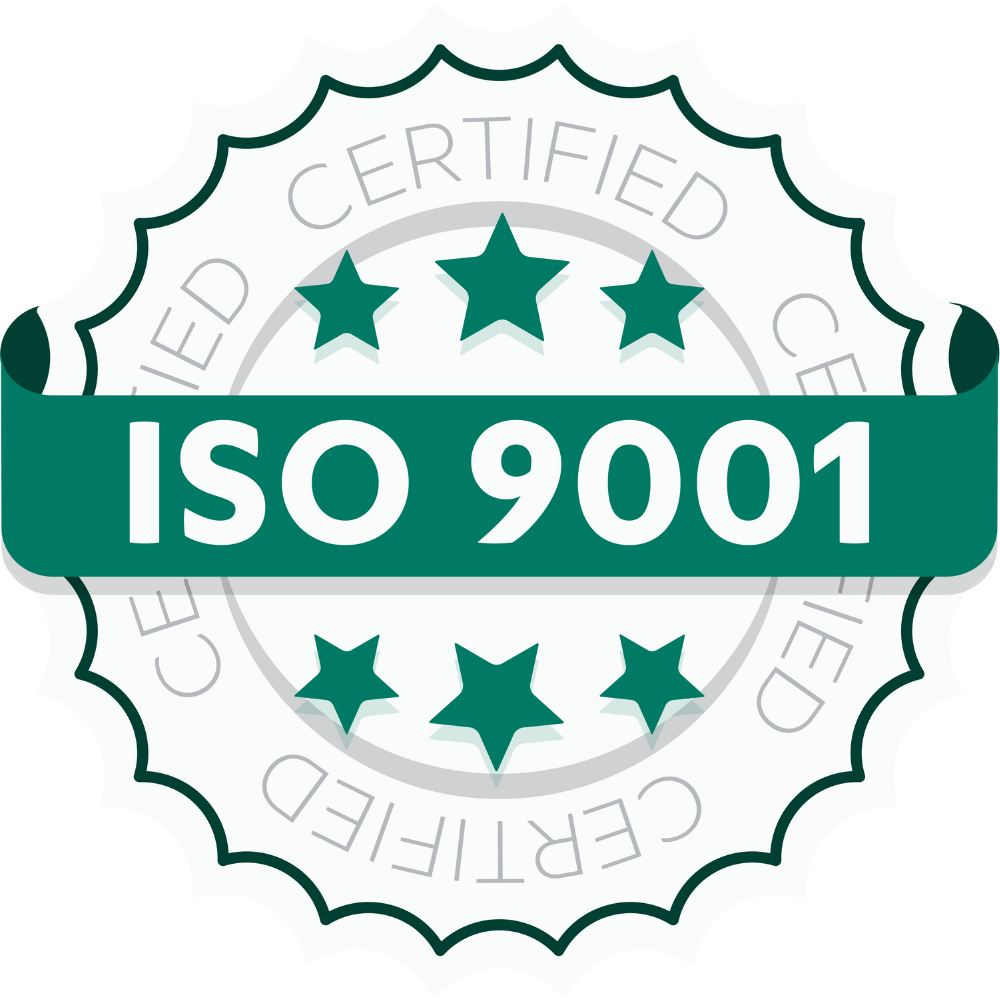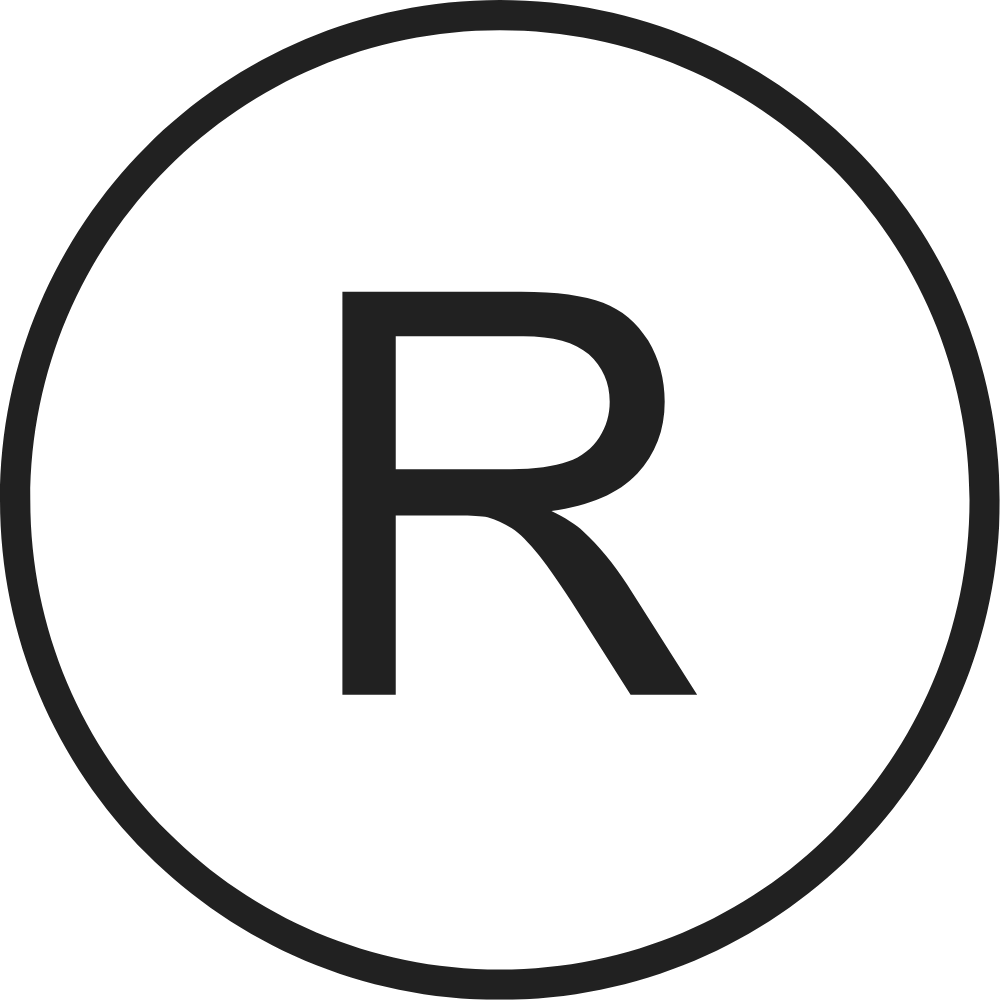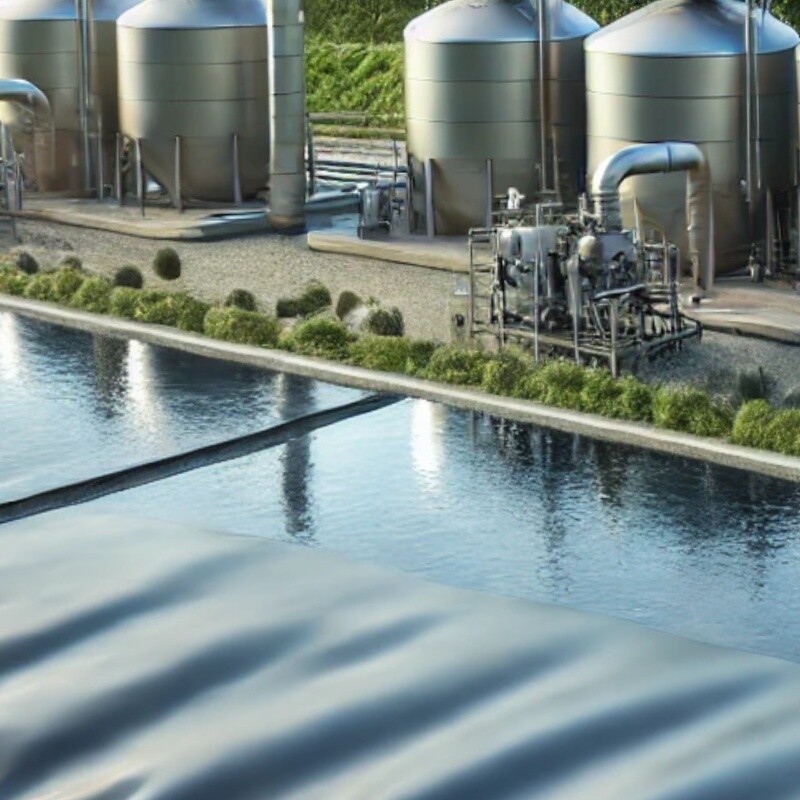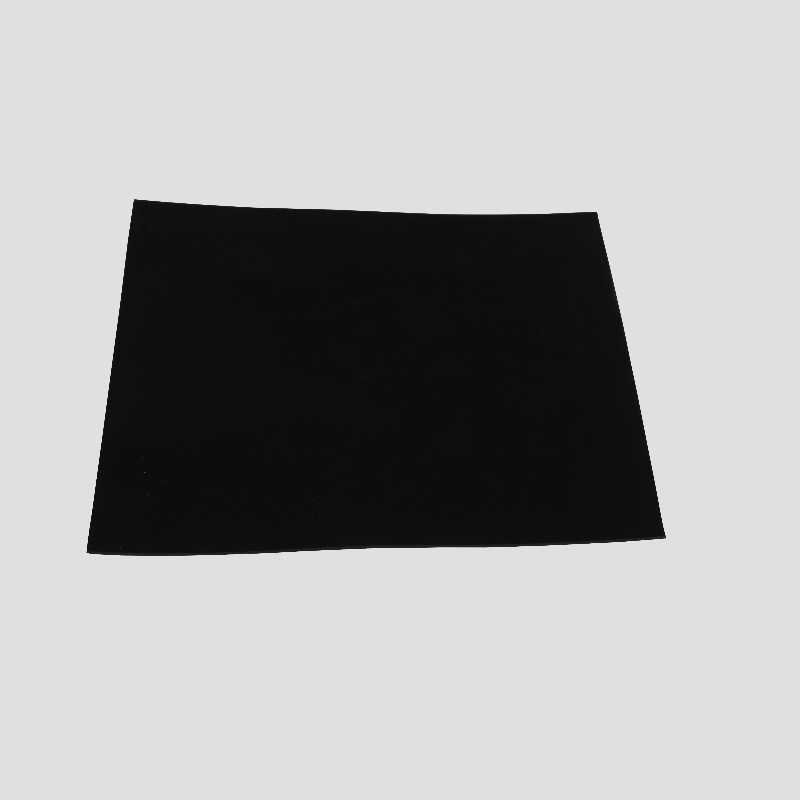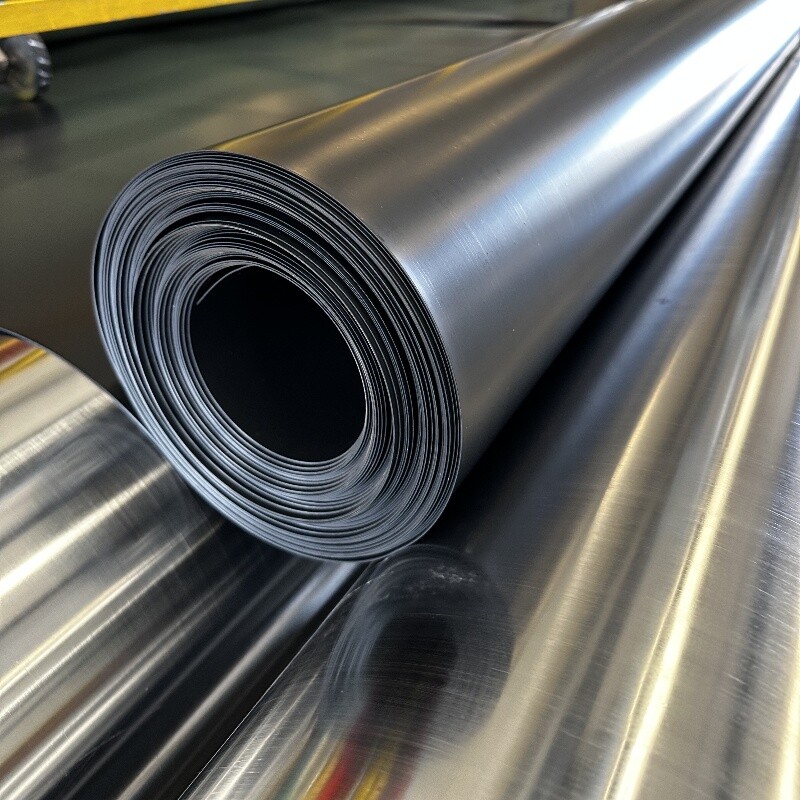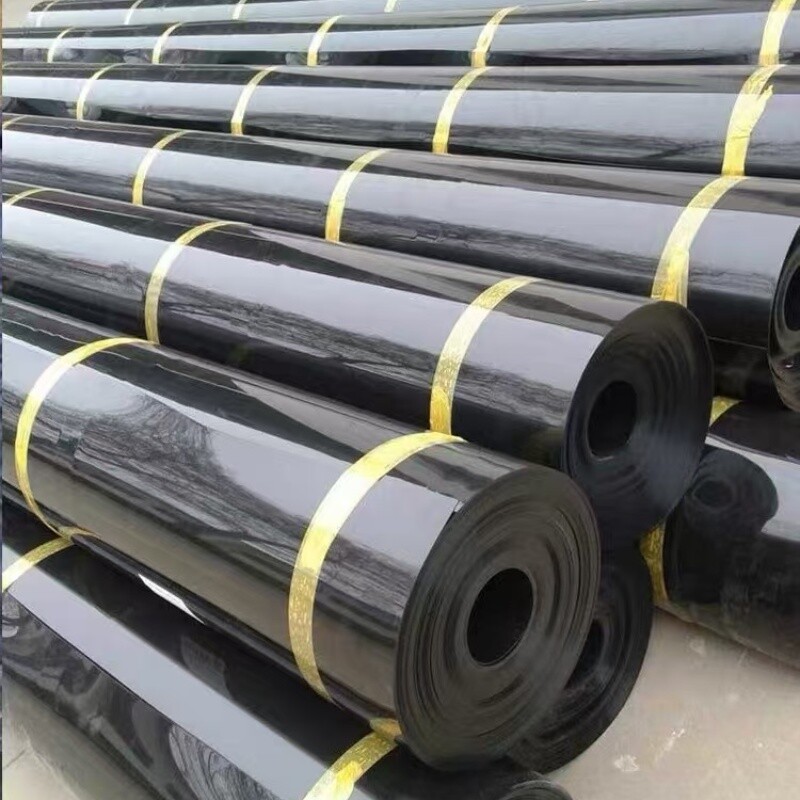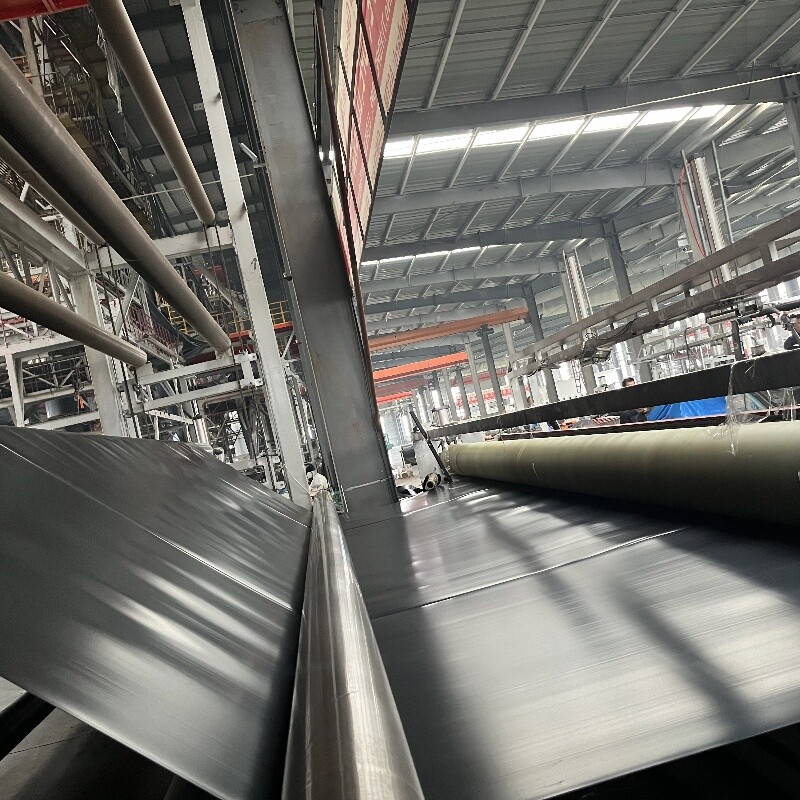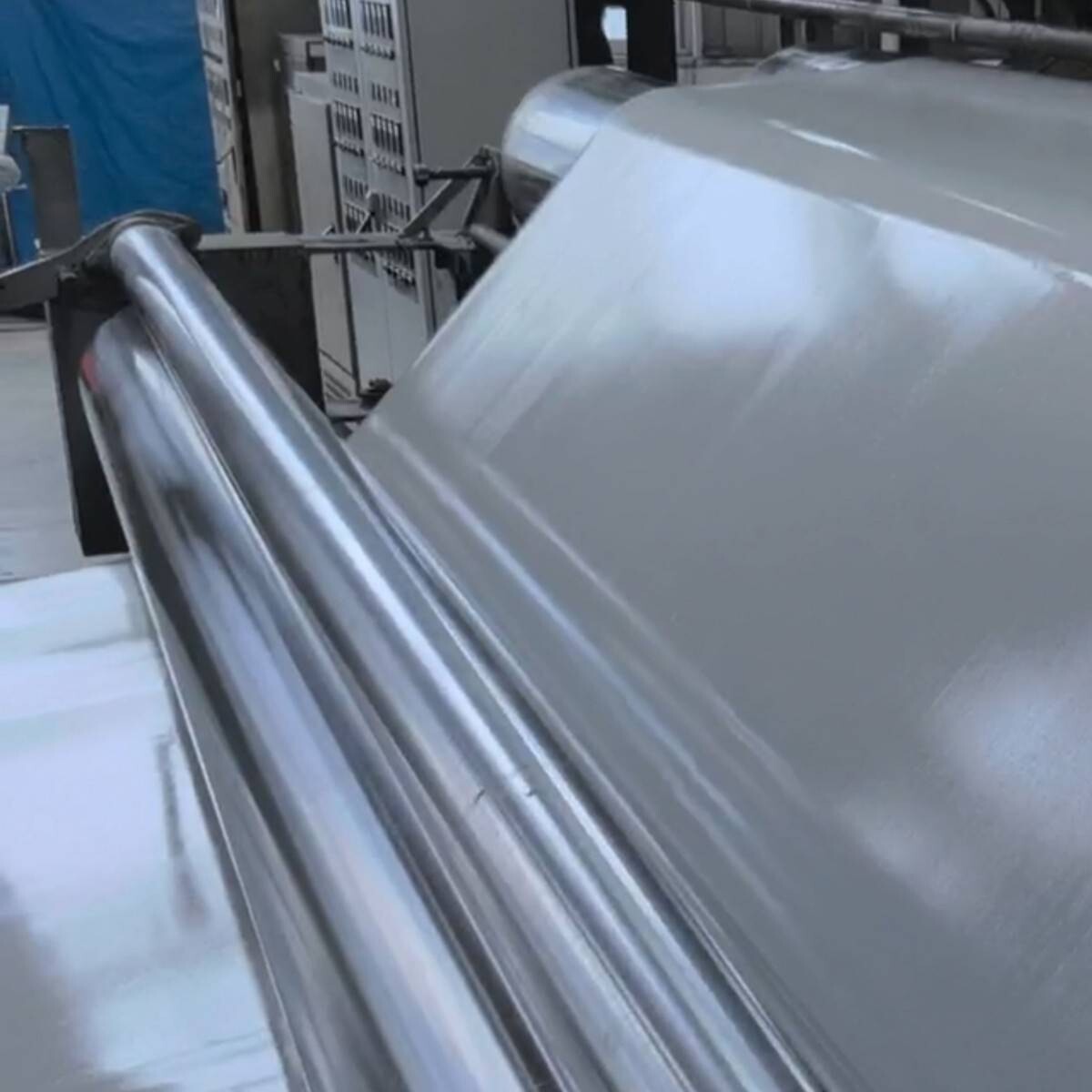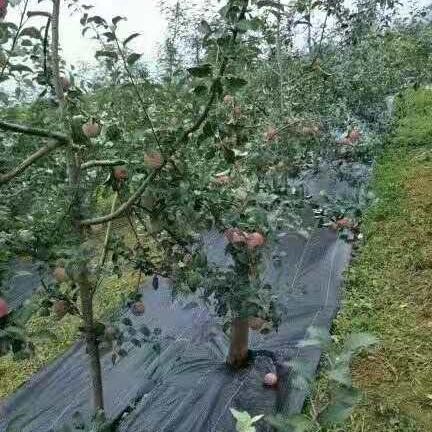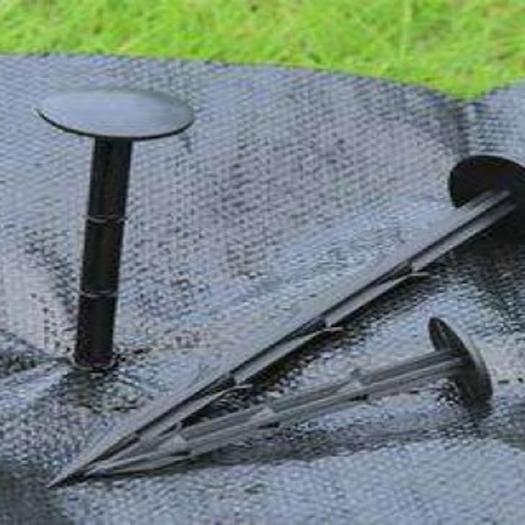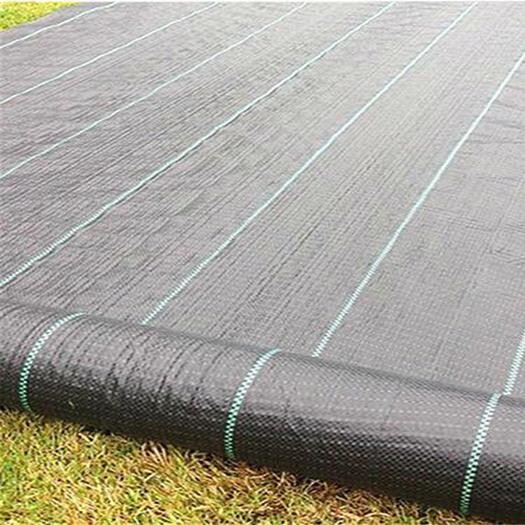Product Overview
The Biogas Pond and Oxidation Pond Geomembrane is a specially engineered lining solution designed for use in biogas and oxidation ponds. These ponds are commonly used in the treatment of wastewater, organic waste, and the production of biogas, which makes it critical to prevent leakage and contamination. The geomembrane ensures the containment of harmful gases, liquids, and waste products while providing superior resistance to UV rays, chemicals, and mechanical stress. Made from durable materials such as HDPE (High-Density Polyethylene) or PVC (Polyvinyl Chloride), it is suitable for a variety of pond applications, providing reliable waterproofing and protection for long-term use.
Product Features
- Excellent Waterproofing: The Biogas Pond and Oxidation Pond Geomembrane acts as a high-performance barrier that prevents water, waste, and gases from leaking into the surrounding environment, ensuring that the pond remains fully contained.
- Chemical and Biogas Resistance: The geomembrane is highly resistant to the corrosive effects of biogas, chemicals, and wastewater, ensuring durability and long-term protection.
- UV Resistance: The membrane is treated with UV stabilizers, making it suitable for outdoor applications with prolonged exposure to sunlight without degradation.
- Durability: The geomembrane is designed to withstand harsh environmental conditions, such as extreme temperatures and exposure to wastewater, waste, and other harmful substances.
- Low Permeability: The membrane has extremely low permeability, ensuring that no liquids or gases can penetrate through, maintaining the integrity of the pond and the surrounding environment.
- Ease of Installation: The Biogas Pond and Oxidation Pond Geomembrane is flexible, making it easier to install, while also providing an impermeable and continuous seal when properly welded or overlapped.
Product Specifications
- Material: HDPE (High-Density Polyethylene), PVC (Polyvinyl Chloride), or other durable geomembrane materials, designed to resist UV radiation, chemicals, and biogas exposure.
- Thickness: Standard thicknesses typically range from 0.5 mm to 2.5 mm, depending on the expected mechanical load and environmental conditions.
- Width: Rolls typically come in widths ranging from 4 meters to 6 meters, but customized widths can be manufactured to suit specific pond dimensions.
- Length: Rolls are generally available in lengths from 50 meters to 100 meters, with custom lengths available based on project needs.
- Tensile Strength: Tensile strength typically ranges from 15 to 30 MPa, ensuring the membrane can resist mechanical stresses during installation and operation.
- Elongation at Break: Usually ranges from 12% to 20%, allowing the membrane to stretch and adjust to shifts in the pond structure without tearing.
- Permeability: Extremely low permeability (less than 1 x 10^-13 cm/s), ensuring effective containment and protection.
- Color: Standard color is black to enhance UV resistance and reduce the growth of algae. Custom colors can be available depending on project specifications.
Applications
- Biogas Ponds: The geomembrane is used to line biogas ponds, which are designed to capture methane gas produced during the decomposition of organic matter. It helps to prevent leaks and ensures that methane gas remains contained for energy production or proper management.
- Oxidation Ponds: Commonly used in wastewater treatment processes, oxidation ponds require waterproofing membranes to manage waste and prevent leakage of untreated wastewater into the surrounding environment.
- Wastewater Treatment Facilities: The geomembrane is applied in ponds used in wastewater treatment, providing a containment solution for raw or treated water and preventing contamination of the surrounding soil and groundwater.
- Agricultural Waste Management: Used in agricultural settings for the treatment of manure, slurry, or organic waste in ponds, ensuring safe storage and preventing the contamination of nearby land or water bodies.
- Landfill Leachate Containment: Applied in landfill leachate ponds to contain hazardous liquids and prevent the leakage of pollutants into the environment.
- Mining Operations: Suitable for use in mining applications, particularly in the management of process water or tailings storage ponds, where contamination must be minimized.
Construction Recommendations
Site Preparation: Prepare the site by clearing the area of rocks, sharp objects, and debris that may cause punctures to the geomembrane. The surface should be smooth and compacted to ensure proper installation and to minimize the risk of damage during use.
Installation Method: Lay the Biogas Pond and Oxidation Pond Geomembrane out carefully, ensuring it is free of wrinkles and folds. Roll the material smoothly over the pond surface, allowing for a uniform distribution. Use welding techniques to connect adjacent sheets securely, creating a seamless, impermeable barrier.
Seam Welding: Use heat welding or extrusion welding methods to join the geomembrane sheets. The seams should be tested with air or vacuum pressure testing methods to ensure the integrity of the seams, ensuring they are watertight and resistant to leaks.
Protection During Installation: Protect the geomembrane from punctures, tears, or damage during installation by using a geotextile fabric or other protective layers, especially if heavy machinery is involved.
Backfilling and Covering: After installation, cover the geomembrane with a protective layer of soil or gravel to prevent UV degradation, physical damage, and to support the membrane during use. Backfilling should be done gently to avoid overloading or causing strain on the membrane.
Inspection and Maintenance: Periodic inspections of the Biogas Pond and Oxidation Pond Geomembrane should be performed to check for signs of wear, damage, or punctures. If any damage is found, it should be repaired immediately using appropriate welding or patching methods. Regular maintenance ensures that the membrane continues to perform effectively over time.
FAQ
- What can you buy from HONGYUE?
Geogrid, Geomembrane, Geocell, Geotextile and other geosynthetic materials.
- What you can expect from HONGYUE?
Competent and knowledgeable technical engineers .
Customized service according to engineering requirements .
Complete solutions for product design, delivery and installation in construction projects .
Offer various complementary product portfolio and contract project.
- How can HONGYUE guarantee quality?Always a pre-production sample before mass production;
Always final Inspection before shipment - What is your sample policy?
We can provide the sample free, you just pay for the transportation freight then you can get 3-5 days.
- What is the services can HONGYUE provide?Accepted Delivery Terms: FOB,CFR,CIF,EXW,DDP,Express Delivery,and so on ;
Accepted Payment Currency:USD,CNY;Euro;and so on ;
Accepted Payment Type: T/T,L/C,MoneyGram,Credit Card,PayPal,Western Union,Cash - Are you manufacturer or trading company ?
We are a professional manufacturer
- How about your delivery time?The specific delivery time depends on the items and the quantity of your order.
Inquiry about this product
Related Recommendations
If there is no accurate search result, please contact us and we will respond within 24 hours.


